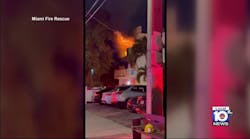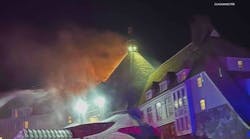The leadership of the fire service has significantly increased its understanding of (and emphasis on) the health and safety of firefighters over the past 15 years. This includes selecting qualified candidates, providing strong incident command, standard operating procedures, proper equipment, and complying with regulations and standards. We are now conducting health evaluations, placing emphasis on psychological, emotional and physical wellness, and emphasizing chemical and medical exposure management. Ongoing training in a full range of subjects that impact knowledge and competence, assigning safety officers, and other issues have had a positive effect on the health and safety of firefighters.
As we function within a mission that naturally includes an active analysis of risk to our members in a variety of situations, those occupying positions of leadership must demonstrate that leadership in ways that impact health and safety issues in a positive, practical and effective way. This is easier to say than to do.
Rather than discuss all of the standard program management responsibilities within the area of firefighter health and safety, let's review a few key leadership issues that tend to regulate the effectiveness of these programs and our members' attitudes towards them. Doing so can improve the odds of firefighters surviving the emergency situations we dispatch them to handle. No matter what formal positions of rank we hold, demonstrating our commitment to these issues through our behaviors and actions will send a stronger message than anything we could simply "say" about them.
Safety Leadership Reminders
- Stay mentally alert to all of the ways we can become exposed or injured at the station, in training or at the scene of a call. Inattentiveness or complacency cannot be allowed to affect our actions or decisions. There is no such thing as a routine call. Remember that minor injuries are many times just a matter of good luck - it could easily have been much worse.
- Many of the tasks that firefighters perform involve hard, strenuous work performed with little time for warmup. Lots of firefighters die of heart attacks or experience career-ending injuries doing training or working at fires or at other emergency scenes. Maintaining a reasonable level of aerobic fitness, physical strength and flexibility, combined with an emphasis on psychological and emotional fitness, will significantly improve a firefighter's odds of survival.
- Fire apparatus crashes that occur during emergency response and non-emergency travel are a major cause of firefighter injuries and deaths each year. Members must always take special care when driving to and from calls, stay seated and wear seatbelts.
- Fire officers must avoid putting firefighters in offensive positions on defensive fires. If anything negative happens regarding structural integrity, the extent of the fire, the ventilation profile or a number of other factors, the stage could be set for a terrible outcome.
The incident commander determines the strategy (offensive or defensive) based on an ongoing evaluation of critical fireground factors and through the management of an incident action plan. The building should not declare the strategy by running firefighters out at the last minute or by seducing leaders to take risks with firefighters' lives that may not be worth what they're trying to accomplish.
If the appropriate strategy is offensive, then get with it. Half-hearted offensive attacks are dangerous to those who ride engine and ladder companies. However, if the appropriate strategy is defensive, we should get our firefighters out of, off of and away from the structure…period.
This same risk-vs.-gain assessment should be standard practice at all types of emergency incidents. Leaders must ask themselves initially and periodically throughout the incident, "Is the risk I'm taking with my people worth what we're trying to accomplish here?" If the answer is yes, then keep going, but if the answer is no, then stop doing what you're doing. Remember the following risk analysis model - it's been around for several years:
- We will risk ourselves a lot, within a structured plan, to save a savable life.
- We will risk ourselves a little, within a structured plan, to save savable property.
- We will not risk ourselves at all to save lives or property already lost.
- On the fireground, firefighters assigned to crews, companies or teams must not get separated from each other or get lost.
"One" is never a team. We should always remember that if we find ourselves alone and things are going OK, if things take a sudden turn for the worse, or we get disoriented, we are still alone.
When firefighters get lost at a structure fire there is only one good thing that can result from it - they are found. Every other possible outcome is bad. Everyone must stay connected to the system, through his or her company, to the incident commander. Freelancing must not occur at any level in the organizational structure.
- We should all use the appropriate tools and protective equipment on every job we encounter.
As leaders, our comments and actions toward health and safety frames our members' approach to these programs. How we (as leaders) function regarding the health and safety leadership issues covered in this article, to a large extent, regulates the way our members view them.
If we revisit leadership concepts developed as long ago as 600 BC in China, Lao Tsu professed that one leads primarily by example. The inability or unwillingness of those in leadership positions (regardless of rank) to practice this basic concept undermines firefighter health and safety as much (or more) than any other factor.
Leadership includes modeling the behaviors and expectations we have of others. Leaders are always teaching others what to think and how to behave by their own example, good or bad. Imagine the positive effect of putting emphasis on these straightforward safety and survival leadership issues every day and at every emergency incident.
We should never minimize the potential risks firefighters face, but through leadership, we can reduce that risk and improve their odds of survival. Nobody has this whole leadership thing figured out, but like every other aspect of our work, we will always do better through awareness, knowledge, practice, and experience.
The most dangerous firefighters and fire officers I've ever known in my career have been the ones who thought they were "fully trained" - be very cautious working around them.
I hope you find this article useful. Let's take care of each other all the time and demonstrate that commitment through our words and actions. We'll all be better off - in health and safety outcomes, as well as in other ways.
Dennis Compton, a Firehouse® contributing editor, is chief of the Mesa, AZ, Fire Department and previously was assistant chief of the Phoenix Fire Department. He has 30 years of fire service experience and is active internationally as an instructor, author and consultant. He is immediate past executive board chair and current board member of the International Fire Service Training Association (IFSTA), chair of the National Advisory Committee of the Congressional Fire Services Institute, board member of the National Fire Protection Association (NFPA), and a member of the International Association of Fire Chiefs (IAFC) and International Society of Fire Service Instructors (ISFSI).




